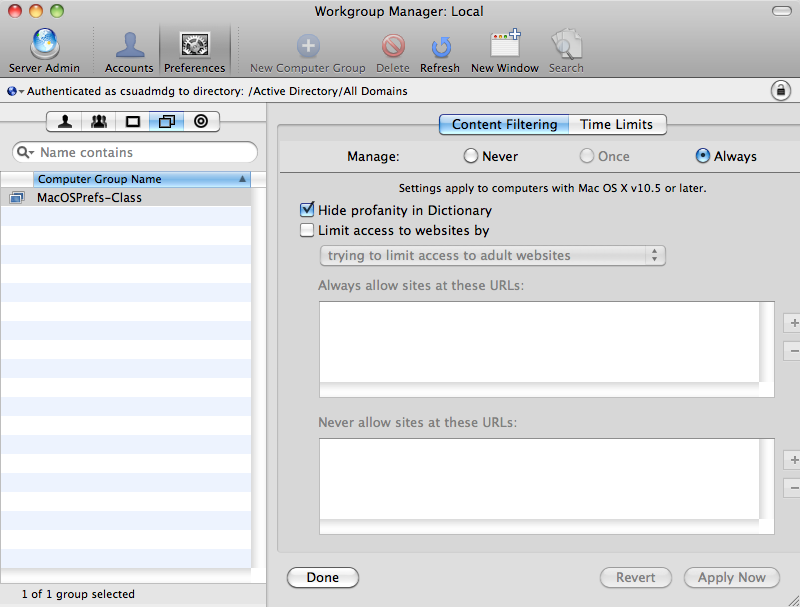
The downside, however, is still the relative newness of configuration profiles compared to Managed Preferences and the fact that older Macs or those running older OS X versions aren’t supported. That streamlines expenses and administrative tasks. A single product and a single interface can consistently manage Macs, iPads, Android phones, and a range of other devices and platforms. One advantage to this new approach is that it encourages one-stop shopping for enterprise management solutions. AirWatch already supports Mac management, for example, and MobileIron has announced that it will be adding Mac management capabilities in the near future. Since Lion and Mountain Lion configuration profiles are essentially a variation on iOS configuration profiles, it’s relatively easy and straightforward for mobile management vendors supporting iPhones and iPads to expand to include support for managing Mac workstations.
#Apple workgroup manager for mac
More recently, companies that develop mobile management tools have announced support for Mac management. In such instances, the management tool lets you create/manage multiple configuration profiles, enroll devices, and push changes out to managed Macs. As with iOS, Apple supports the use of mobile management tools, including Mountain Lion Server’s Profile Manager, to take on this challenge. Like iOS devices you can distribute Mac configuration profiles by email, posting them to a website, or manually copying them to a Mac.Įnsuring profiles are installed and preventing users from disabling them requires a more proactive mechanism. Profiles can be manually managed in System Preferences from a Profiles pane that appears if profiles have been installed. When attempting to share your iPhoto Library, for instance, you may find that preference is. Once installed, the Mac will read and apply any data in the profile. When working on shared or managed systems, preferences for applications may not always work as expected.
#Apple workgroup manager install
Opening a profile on a Lion or Mountain Lion Mac offers the option to install the profile. Each profile contains one or more managed settings or access restrictions. When a user logs into that Mac, it reads and applies any settings defined in the user’s account along with the user’s group memberships and associated settings.Ĭonfiguration profiles work a bit differently. When a Mac is joined to an Open Directory domain, it reads and applies any computer or computer group configurations that apply to it. Those settings can be stored in user, group, computer, and computer group records.

Managed Preferences stores its various administrator-defined settings in records within Open Directory (or Active Directory if you’re feeling adventurous and are comfortable altering/extending the Active Directory schema).


 0 kommentar(er)
0 kommentar(er)
